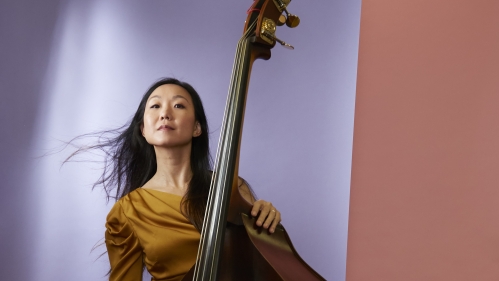AAPI JazzFest Spotlights Innovation Among Growing Community of Asian American and Pacific Islander Artists

Jazz trombonist Peter Lin is proud to continue the genre’s lineage as an African American art form. But over time, he wanted his arrangements to incorporate the music of his parents’ homeland, Taiwan, including the folk songs and karaoke performances he remembered from his childhood.
“I wanted to connect with my roots,’’ said Lin, who lives in New Jersey. “I feel like my culture is deeply embedded in my music in the way I play and how I conceived playing.’’
Along with the Institute of Jazz Studies at Rutgers-Newark, Lin’s company, Yardbird Productions, will be presenting the third annual Asian American Pacific Islander JazzFest at Express Newark on Saturday, May 18. Part of AAPI Heritage Month, it is the only festival of its kind on the East Coast.
“This festival helps us understand that jazz is a music that is still dynamic, is living and breathing and has relevance for artists interpreting their own and other people’s lives,” said Institute of Jazz Studies Executive Director Wayne Winborne. “The event is looking at a specific community, but it’s broader than that, like jazz – which is a music that comes out of a specific American community but resonates around the globe.’’
Lin will be among more than 24 performers to take the stage. Held from 12 p.m. to 10 p.m., the JazzFest will also include artist conversations, food, vendors, and a chance to meet and play with the musicians. Go here for a list of the performers.
The festival encompasses a range of jazz subgenres, from traditional jazz to avant garde fusions. The performers incorporate Asian and Pacific Islander musical influences and gather for a jam session finale.
“We have more than 100 years represented. There’s trad jazz spanning from the 20's and 30’s to synths and electronic music,’’ said Lin, a versatile composer and performer who wrote jazz variations of tunes from the video game series “Final Fantasy.’’
For many musicians, the AAPI Jazz Fest is a chance to deepen their sense of community– amid careers that often began in isolation–and inspire each other artistically.
“One theme that I noticed is that a lot of us feel invisible in some sense,’’ said Kengchakaj Kengkarnka, a New York City jazz artist who is originally from Thailand and experiments with electronic music. “I’m not saying there’s a push back, but it seems like there aren’t a lot of us and sometimes we feel lost. We’re taught to assimilate, and there’s a good and bad in that. But I feel like we should be able to not feel invisible anymore and maybe this will help us reach common ground and hopefully contribute something to the scene.’'
“The AAPI JazzFest is not only great for representation but it's great for us to have peers, support, a community, and friends that are doing the same thing,’’ added Kengkarnka. “We’re not alone and we’ve probably had similar experiences, whether we’re Asian American or immigrants from Asia.’’
Lin grew up in Morris County and developed a love of jazz through his school district’s music programs. Later, he attended William Paterson University, where he majored in jazz but often felt like an outsider.
“I was the only Asian American jazz student,’’ he remembered. “I felt very conflicted. I really loved the music but I felt like I didn't quite belong. It was hard to find people who looked like me performing jazz. It’s not to say there weren’t any, but I wasn’t seeing it. I wasn’t seeing it in the magazines or in the media.’’
Attending a summer camp for Tawainese American youth helped Lin connect to his cultural heritage and inspired him to create new sounds in his jazz compositions.
Kengkarnka grew up in Bangkok, where he studied jazz at school and listened to his parents’ collection of Sarah Vaughn and Miles Davis CDs. After moving to the U.S. eight years ago, he began searching for ways to explore the music of Thailand through jazz.
“I’m trying to, maybe not combine, but to synthesize this sound I grew up with and I wasn’t able to bring the two sounds together until a few years ago,’’ he said. “I was finally able to make that fusion possible.’’
As the population of Asian immigrants in the U.S. continues to grow, Lin anticipates there will be more Asian artists who expand jazz as a global art form.
“There are a lot of us out here. My opinion is that we haven’t discovered them yet or there isn’t the platform for them to be discovered,’’ he said. “I want to give them the platform to express themselves, where they can grow as musicians and perform for an audience that can become their fans.’'


